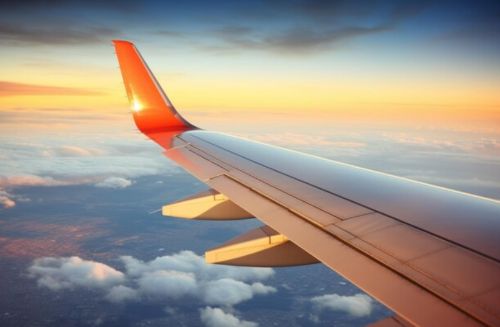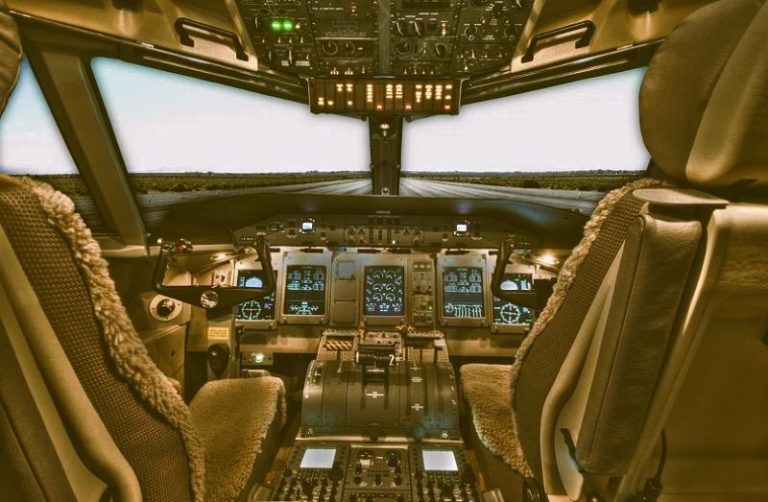

Air travel inspires both wonder and curiosity. For passengers seated by the window, few things are more striking than seeing the wings of a massive jetliner seemingly bend and sway during turbulence. At first glance, wing flex might feel alarming, especially when the aircraft is jostling through rough air. Yet, this movement is not only expected but also central to modern aircraft design. In fact, the ability of a wing to bend is one of the reasons commercial aviation is so safe today.
According to the International Air Transport Association (IATA), more than 4.7 billion passengers traveled by air in 2023, making aviation one of the most heavily relied-upon modes of transportation in the world (IATA). Understanding why wings flex, and how this phenomenon contributes to safety, can help demystify one of the engineering marvels that keeps those billions of journeys safe and comfortable.
The Science Behind Wing Flex
How Wings Are Designed to Bend
Aircraft wings are not rigid slabs of metal. Instead, they are highly engineered structures designed to endure and adapt to aerodynamic loads. When a plane encounters turbulence or changes in pressure, the wing’s structure absorbs these forces by flexing upward. This bending action reduces the amount of stress transmitted to the fuselage and improves overall stability.
Engineers account for these stresses during the design phase. Commercial aircraft must pass strict certification tests, including static load tests where wings are bent to 150% of their maximum expected operational load without failure. For instance, Boeing’s 787 Dreamliner wings were tested to deflect over 25 feet before reaching their breaking point. These tests provide critical assurance that actual in-flight bending remains well within safe margins.
Materials and Modern Advances
Historically, aluminum dominated wing construction due to its strength-to-weight ratio. However, the industry has shifted toward composite materials, particularly carbon fiber. Composites offer remarkable flexibility while maintaining structural integrity, allowing wings to bend significantly more than aluminum without permanent deformation. This not only enhances resilience but also reduces aircraft weight, leading to better fuel efficiency and reduced emissions.
Why Flexibility Enhances Safety
Shock Absorption in Turbulence
Think of wing flex like the suspension system in a car. Just as shock absorbers smooth out bumps in the road, flexible wings absorb and distribute the loads caused by turbulence. Instead of transmitting all the energy directly to the fuselage, the wings flex upward, reducing the jolt passengers feel and lowering stress on the cabin structure.
Preventing Catastrophic Failure
A rigid wing would be more vulnerable to cracking or breaking under extreme pressure. By contrast, a flexible wing dissipates energy across its structure, reducing the likelihood of catastrophic failure. This flexibility also contributes to the aircraft’s ability to handle forces well beyond normal operational conditions, providing an added safety buffer.
Controlled Balance Between Flexibility and Stiffness
Of course, excessive flexibility can introduce challenges. Too much bending can slightly delay how quickly ailerons and other control surfaces respond, impacting maneuverability. Engineers balance these trade-offs carefully, ensuring wings remain flexible enough to absorb stress but stiff enough to maintain precise control. This balance is central to safe and predictable flight performance.
Testing and Certification
Static and Dynamic Testing
Certification authorities such as the FAA and EASA require rigorous testing before an aircraft can enter service. Wings undergo static load testing, where they are bent far beyond normal flight limits, and fatigue testing, which simulates decades of use by repeatedly flexing wings through millions of cycles.
Real-Time Monitoring
Beyond pre-certification testing, modern aircraft are equipped with sensors, including strain gauges and accelerometers, embedded in their wings. These sensors provide real-time data to pilots and maintenance teams, helping monitor structural health over time. If a wing were ever to approach unsafe levels of stress or fatigue, maintenance protocols ensure issues are addressed long before they could pose a risk.
Passenger Perception vs. Engineering Reality
Why It Looks Scarier Than It Is
For passengers, seeing a wing flex several feet during turbulence may feel dramatic, but in reality, the movement represents a fraction of the wing’s designed capacity. What looks extreme is simply the wing doing its job—absorbing energy and protecting the aircraft’s structure.
Safety by Design
It’s important to note that no commercial jet has ever experienced wing failure due to normal turbulence. The rare cases of structural issues have occurred during controlled testing scenarios, not in passenger operations. This track record is a testament to the robust engineering and redundancy built into modern aviation.
The Future of Wing Design
Toward Morphing Wings
Looking ahead, aerospace engineers are exploring morphing wing technology—wings that can actively change shape during flight. These designs aim to optimize lift and drag dynamically, further enhancing efficiency while maintaining safety. Such innovations build on the fundamental principle that flexibility is strength, not weakness.
Materials Innovation
Advances in nanomaterials and next-generation composites promise even greater strength-to-weight ratios. These innovations will allow for lighter wings capable of greater flexibility and resilience, ultimately contributing to more efficient and environmentally sustainable aviation.
How Wing Flex Relates to Overall Aircraft Safety
Holistic Safety Systems
Wing flex is just one of many design features that contribute to the safety of commercial aviation. Other systems, such as pressurization, avionics, and emergency equipment, all work together to create multiple layers of redundancy. For example, while wing flexibility protects the aircraft structurally, systems like aircraft oxygen ensure passenger safety in rare cabin pressure events.
Reassurance for Travelers
When passengers understand that wing flex is not a sign of weakness but rather of resilience, it can ease anxiety during turbulence. In the same way that we trust suspension systems in cars or safety features in skyscrapers, aircraft wing design demonstrates the synergy of engineering precision and safety foresight.
Conclusion
Aircraft wings flex during flight because they are purposefully designed to bend under aerodynamic stress. Far from being a structural flaw, this flexibility is one of aviation’s greatest safety assets. By absorbing and distributing loads, preventing catastrophic failure, and enhancing passenger comfort, wing flex underscores the engineering brilliance behind modern flight.
Through decades of testing, material advances, and continuous monitoring, the aviation industry has transformed wing flex into a symbol of safety rather than concern. For travelers, the next time turbulence reveals the bending elegance of a jet’s wings, it’s worth remembering: that flex is proof of an aircraft working exactly as intended—keeping everyone on board safe.


